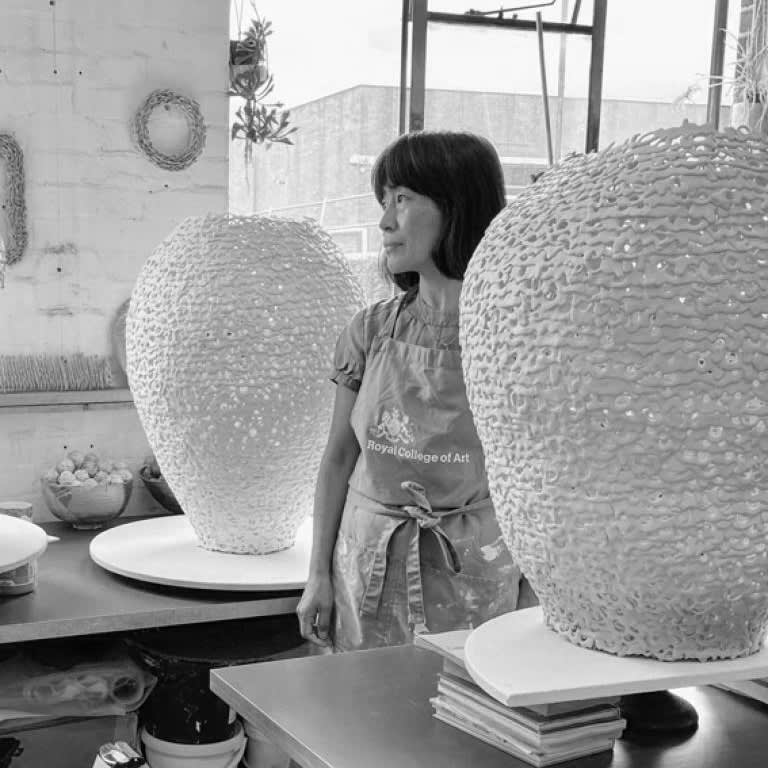Mimi Joung, originally from Korea, gained her Masters in Ceramics and Art from the Royal College of Art and is based in London, UK. She makes site specific and project-based exhibitions inspired by her interest in language, material and the history of ceramic art in the context of wider artistic exploration. Her work can be found in art, craft and museum collections around the world.
For Mimi Joung, art is not a profession, it is a way of being. It is a practice and a form of poetry. It’s a reaction against commerce and the digital world. Fascinated by art since childhood, Mimi studied ceramics at Wonkwang University in her native Korea, then became an apprentice to a Canadian ceramicist outside Vancouver. After this experience, she moved to London to join the City Lit’s HND ceramic programme and to attend the Royal College of Art.
Exploring language and meaning through making, many of Mimi's works are installation and situational projects, suggestive of landscape and stories, combining clay or glass sometimes bundled together with materials such as elastic bands, knitting wool, objects found in charity shops. She has focused on issues of "displacement", with objects addressing a wider discourse, beyond origin and usage, to reference human situations and experience. She is a commentator, observer and historian reflecting the important cycle of creativity, roots and change. Her process is all important and she uses her hands instinctively to seek and resolve ideas through the act of making, often following a playful approach, reflecting her own life, what she reads and what she learns from other people and situations. She finds comfort through materials and techniques and seeks a deeper meaning through the historical context of ceramic materials, forms and colour.
A major body of her work developed from a response to a simple birth mug on display at the V&A. She imagined the life of Sarah, born in the midst of Britain's industrialisation, and created her own story, ‘a letter to my mother’ (2003) in response. Since then she has created a wide range of site specific, sometimes unfired and unglazed pieces, that build on story-telling and sense-making. In the last decade, her work has evolved as she began to create more sculptural pieces, many based on a slim novel called ‘In Watermelon Sugar’ by the American writer, Richard Brautigan. She creates these sculptures by tracing and taping chapters of Brautigan's surreal landscape which are reflections of displacement within imagined utopias and dystopias. She is currently working on a range of exhibitions that explore art and making through the words of Herman Hesse, T S Elliot, the I Ching and a wider repository of poems, novels and biographies.
